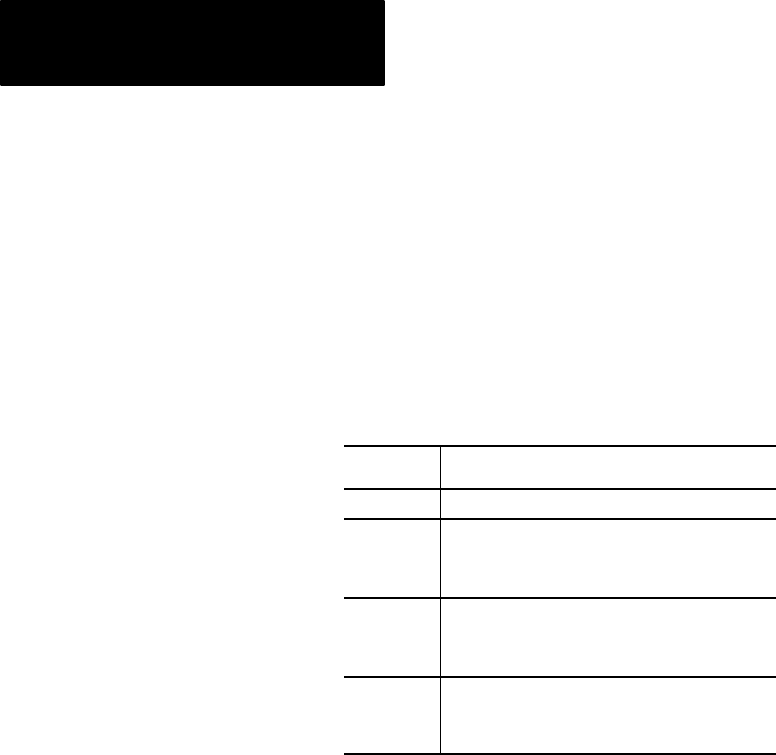User Manual Owner's manual
Table Of Contents
- 1772-6.5.8, Mini-PLC-2/02, -2/16, -2/17 Processor, User Manual
- Important User Information
- Summary of Changes
- Table of Contents
- 1 - Using This Manual
- 2 - Fundamentals of a Programmable Controller
- 3 - Hardware Features
- 4 - Installing Your Programmable Controller
- 5 - Starting Your Processor
- 6 - Maintaining and Troubleshooting Your Processor
- 7 - Memory Organization
- 8 - Scan Theory
- 9 - Relay-Like Instructions
- 10 - Program Control Instructions
- 11 - Timers and Counters
- 12 - Data Manipulation and Compare Instructions
- 13 - Three-Digit Math Instructions
- 14 - EAF Math Instructions
- 15 - EAF Log, Trig, and FIFO Instructions
- 16 - EAF Process Control Instructions
- 17 - Jump Instructions and Subroutines
- 18 - Block Transfer
- 19 - Data Transfer Instructions
- 20 - Bit Shift Registers
- 21 - Sequencers
- 22 - Selectable Timer Interrupts
- 23 - Report Generation
- 24 - Program Editing
- 25 - Programming Techniques
- 26 - Program Troubleshooting
- A - Specifications
- B - Processor Comparison Chart
- C - Number Systems
- D - Glossary
- E - Quick Reference
- Index
- Back Cover

EAF
Process Control Instructions
Chapter 16
16-34
These arithmetic functions have applications in various industries. You
can use the average function for averaging thermocouple inputs or other
process variables. You can use standard deviation and averaging for trend
analysis and report generation.
Status Bits
Bits 14-17 of the most significant word of the result word are reserved for
status bits:
This
Bit:
Stores this:
14 not used
15 done bit
1 the instruction is done and the result is valid
0 the result is not valid
16 sign bit
1 negative ()
0 positive (+)
17 enable bit
1 instruction started
0 instruction not started
Important:Bit 16 of the most significant word of each operand is reserved
for the sign bit.
See chapter 14 for the word format used when a processor executes
an EAF.
We provide two forms of these instructions (3-digit and 6-digit) for two
types of users, one who will be block transferring 3-digit BCD data to his
processor and one who needs up to 6 significant digits.
The 3-digit function must be enabled once for each value to be averaged.
The 6-digit function is completed by enabling the function once.
ThreeDigit
Functions
The 3-digit averaging and standard deviation ladder diagrams are very
similar with the following exceptions:
1. The averaging function number is 06 and standard deviation is 07.
2. The EAF rung (rung 4) of the averaging ladder diagram is a branched
rung. The standard deviation ladder diagram is not branched.
Averaging and Standard
Deviation Functions
Difference Between
ThreeDigit and SixDigit
Functions










